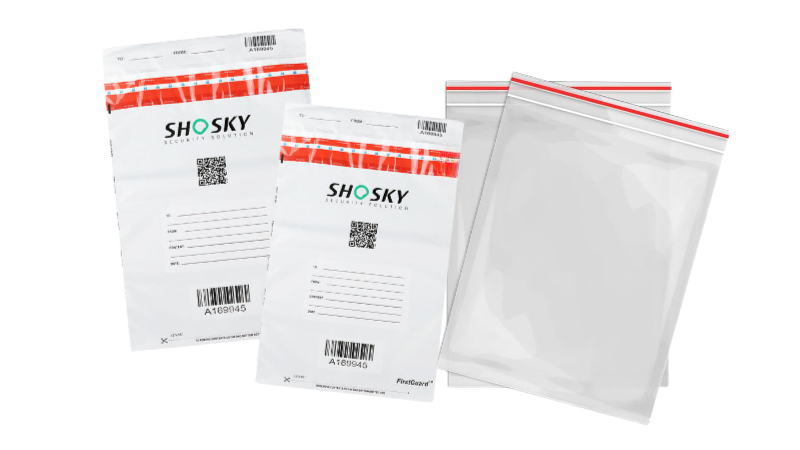Not all bags are created equal. Whether you’re moving cash, legal files, or medical samples, using the wrong type of bag can put sensitive materials at risk. Still, many businesses treat all packaging the same. However, when tampering attempts happen, regular bags fall short.
So, what’s the difference between tamper-evident bags and regular bags? Well, here we’ll break down the key differences between them. You’ll also learn why tamper-evident solutions are trusted across various industries. And by the end, you’ll know exactly when to choose the right tamper-evident bag for maximum protection.
What Is a Tamper-Evident Bag?
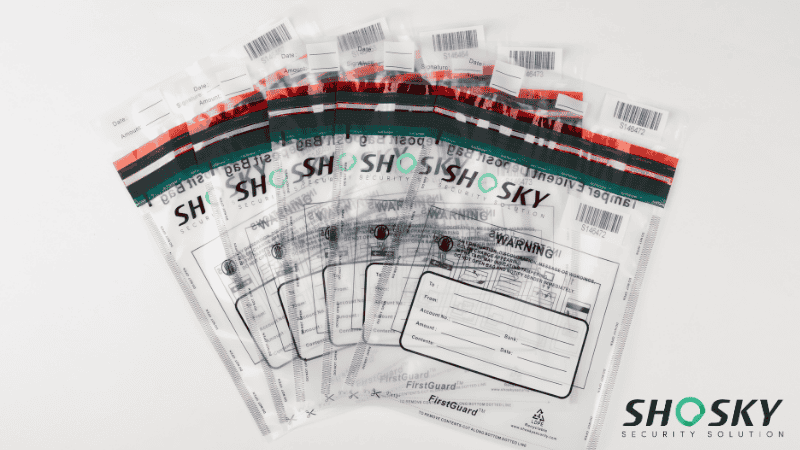
A tamper-evident bag is made to do one thing above all else—show you if someone tried to open it. These bags are used in places where security can’t be compromised. When you’re handling cash, confidential paperwork, or even pharmaceuticals, you need to know if the bag’s been opened. Tamper-proof bags make that easy!
These bags usually include multiple layers of tear-resistant plastic. So, they can’t be ripped open and resealed without leaving damage. Some tamper-evident packaging bags also include permanent adhesive strips that show a “VOID” message if peeled.
And others come with numbered security seals or heat-welded seams that can’t be undone without clear tearing or discoloration.
Key features of tamper-proof bags include:
- Strong, multi-layer plastic film construction
- VOID seals or irreversible zip closures
- Serial numbers or barcodes for tracking
- Common in banking, law enforcement, labs, and pharma logistics
The purpose of tamper-proof evidence bags isn’t just to prevent tampering—it’s to make sure no tampering goes unnoticed. The global market for tamper-proof bags is expected to reach USD 5.3 billion by 2027. This shows growing recognition across industries that standard packaging no longer meets modern security needs.
What Is a Regular Bag?
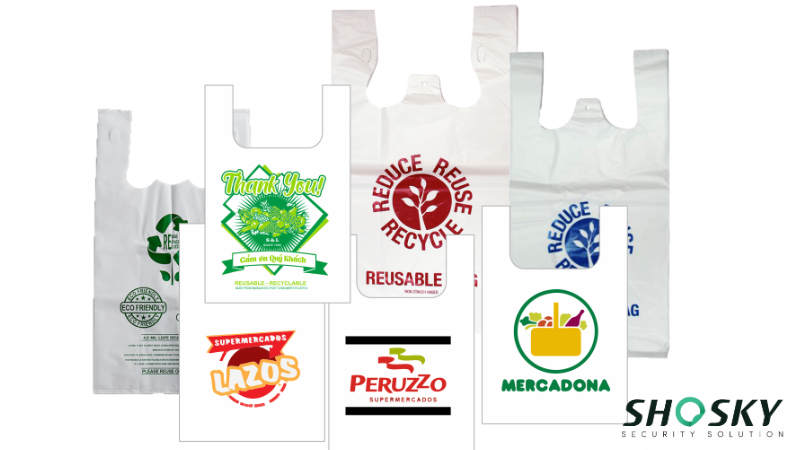
A regular bag is simply a standard storage or packaging bag with no tamper-evident features. It’s made for everyday use—easy to open, and usually reusable. You’ll find them in homes, stores, and offices. But they lack the locking mechanisms or seals needed to prevent tampering or show visible signs if someone has accessed the contents.
These bags are lighter in material, often single‑layer plastic or paper, and are cost-effective. They are common in low-risk uses like retail packaging, standard mail shipments, or storage of non-sensitive goods. However, they don’t meet the standards needed for secure handling or compliance.
Common types of regular bags include:
- Ziplock and reclosable plastic bags
- Poly mailers for e-commerce
- Paper shopping bags
- Single-layer grocery bags
Regular bags are convenient, but despite their convenience, they pose risks. The Environmental Protection Agency (EPA) reports that over 4.2 million tons of plastic bags, sacks, and wraps were generated in the U.S. alone in 2018, much of which ends up in landfills due to single-use habits. This adds an environmental drawback to their already limited security use.
Key Differences Between Tamper-Evident and Regular Bags
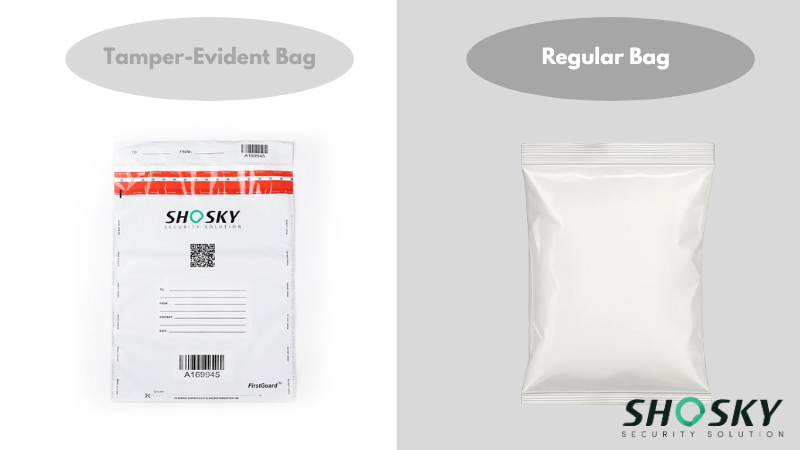
While both tamper-evident and regular bags serve packaging purposes, their differences go far beyond appearance. To help you make an informed decision, let’s break down the key areas where these two types of bags stand apart:
Difference 1: Tamper Detection
Tamper-evident bags are built to show visible signs of tampering. Features like security seals, void security labels, and irreversible closures ensure that once opened, the breach is clear.
These tamper-evident features offer a clear visual indicator, alerting handlers that the contents may have been accessed. This makes them ideal for evidence handling, pharmaceutical companies, and cash transit.
In contrast, regular bags offer no tamper-evident mechanism. Someone can open, inspect, and reseal them without leaving any visible trace. That’s a major concern when transporting confidential documents, medical supplies, or sensitive materials. Without built-in tamper resistance, these bags don’t support a secure chain of custody.
Difference 2: Security Level
Tamper-proof bags provide a high level of protection. They include advanced security features like locking mechanisms, tear-resistant materials, and custom security printing. These additions enhance security and help reduce unauthorized access attempts.
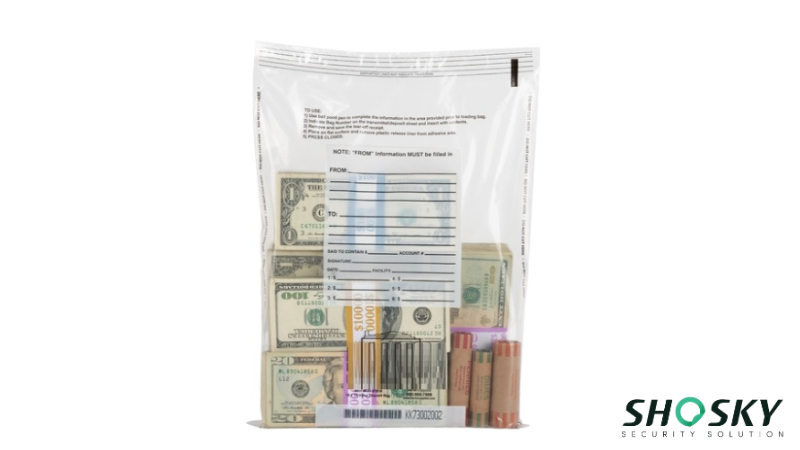
Regular bags are made for low-security use. They’re suitable for daily tasks like packing retail items or shipping basic goods. But they don’t prevent unauthorized access or discourage tampering attempts. This makes them unreliable for industries that require tight security measures.
Difference 3: Regulatory Compliance
Tamper-evident bag supports regulatory compliance in industries like healthcare, law enforcement, and banking.
Agencies such as the Criminal Justice Information Services (CJIS) and HIPAA recommend or require secure bags for handling forensic evidence, legal files, and pharmaceutical products. These bags also help maintain the integrity of custody documentation and secure handling processes.
On the other hand, regular bags do not meet these compliance needs. They lack the necessary tamper evidence and traceability required in legal proceedings or medical transport. Using them in regulated environments may lead to evidence tampering, rejected samples, or breach of chain of custody standards.
Difference 4: Cost
Tamper-evident bags usually cost more than regular plastic bags, and that’s expected. The added price comes from enhanced security features like security tapes, tamper-evident seals, and tear-resistant materials.
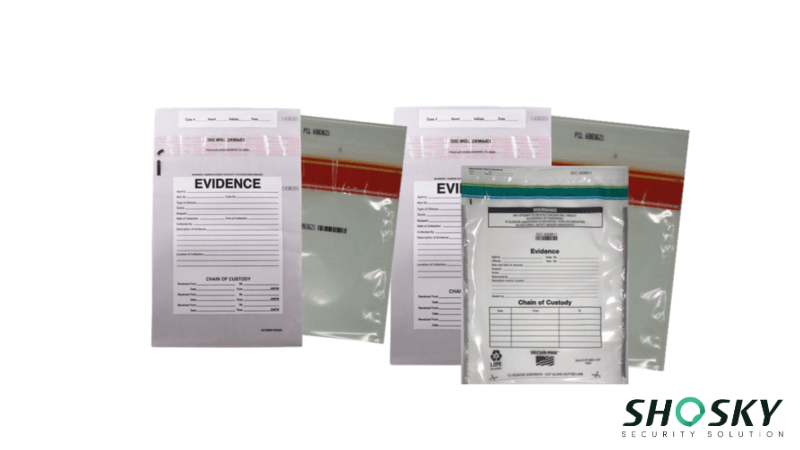
For industries like banking, law enforcement, and healthcare, the extra cost is justified by the value of the protected content.
In contrast, regular bags offer a cheaper alternative but fail to protect sensitive documents, evidence, or medical supplies. A study shows that global demand for tamper-evident packaging is rising due to increasing security concerns. This means more industries are willing to invest in tamper-proof bags to avoid bigger losses down the line.
Difference 5: Customization
Tamper-proof evidence bags come with strong customization options. You can add serial numbers, barcodes, warning messages, or custom printing. Some also include security printing, like microtext or hidden messages that appear if tampered with.
These features boost chain-of-custody control and make unauthorized access easier to spot.
In contrast, regular bags offer very limited customization. At most, you can print a company logo or a simple label. For businesses that rely on traceability, this lack of tracking features can lead to errors or potential security breaches.
Choosing the right tamper-evident bag means gaining both control and accountability!
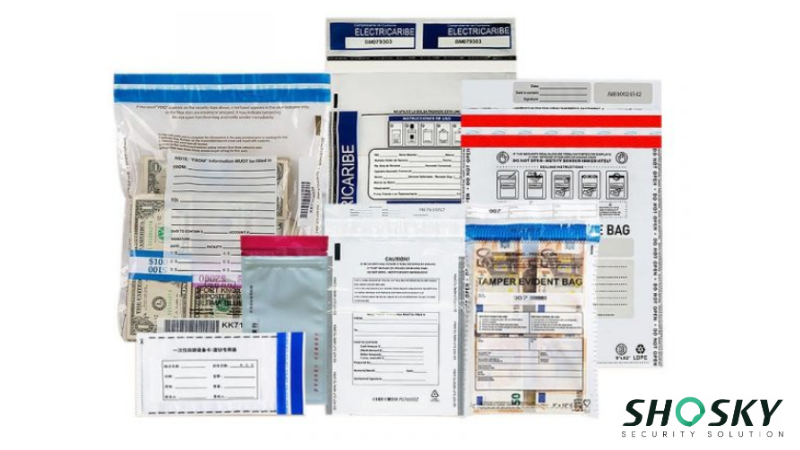
To make the comparison easier, here’s a simple breakdown of how tamper-evident bags stack up against regular bags across key areas.
| Aspect | Tamper-Evident Bag | Regular Bag |
|---|---|---|
| Security | High | Low |
| Material Strength | Tear-resistant, multi-layer plastics | Single-layer plastic or paper |
| Compliance | Meets industry regulations (CJIS, HIPAA, etc.) | Not suitable for regulated or legal use |
| Chain of Custody | Fully supports tracking and custody documentation | Lacks support for custody verification |
| Cost | Higher | Lower |
| Best For | Cash handling, evidence, pharma, legal documents | Retail, mailers, basic storage |
This table highlights how tamper-evident bags offer more than just packaging—they provide real security, legal compliance, and traceability. Regular bags still have their place, but when dealing with sensitive or regulated items, relying on the right tamper-evident solution makes all the difference.
Industry Examples: Who Uses Tamper-Evident Bags and Why
Tamper-evident bags aren’t limited to just one type of use—they’ve become essential across various industries where security, traceability, and compliance matter. Below are real-world examples of how different sectors rely on tamper-evident packaging—and why they can’t afford to go without it.
Banks & Cash Transport: Deposit Bags with Numbered Seals

Banks and cash transport services rely heavily on tamper-evident deposit bags equipped with sequentially numbered seals, security tape, and barcodes. Studies show that using numbered seals on cash bags significantly reduces incidents of internal theft and cash mishandling.
Besides, banks often use these bags with ATMs and transit containers sealed with pull-tight or wire seals. Security tapes and unique ID codes help track deposits and spot tampering, adding transparency and building customer trust.
Pharmacies & Hospitals: Protect Prescriptions and Specimens
Hospital pharmacies and community pharmacies use tamper-proof evidence bags to secure medications and specimens. A survey found that 85% of healthcare providers worry about drug diversion, yet less than 20% track internal risks. To address this gap, many facilities now rely on tamper-evident packaging to protect high-risk items.
In fact, in the UK, the hospitals have started switching from stapled paper bags to tamper‑evident bags for returned prescriptions. The switch prevents accidental tampering during transport: if the seal is broken or the bag is ripped, it’s immediately obvious.
This saves costs and protects patient safety. With hospitals losing an average of $1.4M in drugs annually, tamper‑evident packaging can be an actual game changer!
E‑commerce Retailers: Handle Returns with Serialized Tracking
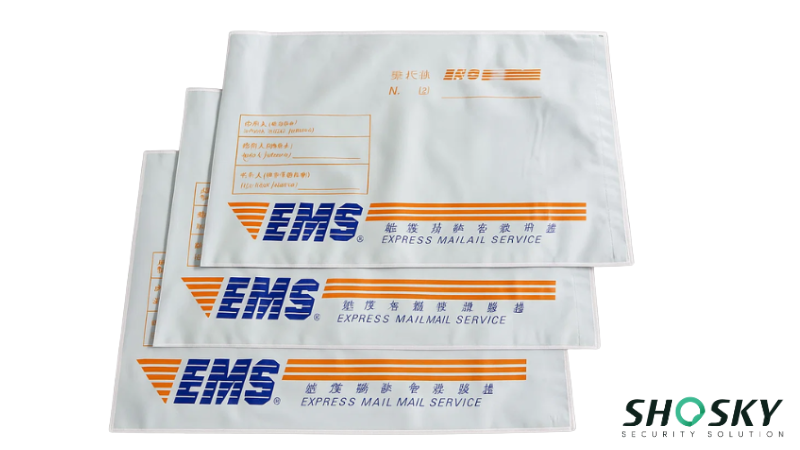
E-commerce companies increasingly use tamper‑evident bags with serialized tracking, barcodes, and unique ID numbers to manage returns. This is critical for verifying the integrity of returned items and preventing fraud.
By scanning barcodes and tracking seals, retailers can ensure returned products haven’t been opened or tampered with before reaching their facilities. That helps protect both consumer safety and company reputation. Serialized tamper‑evident packaging also supports traceability in the supply chain, offering businesses better control over returned or refurbished goods.
Event & Exam Organizers: Secure Ballots, Test Sheets, and ID Verification
Organizations running elections or exams use tamper‑evident pouches and bags to protect ballots, answer sheets, and IDs. In forensic and legal settings, security bags are even a requirement: they must support chain-of-custody documentation and evidence integrity.
Even universities and certification bodies rely on tamper‑evident envelopes to ensure exam papers remain sealed until the proper time. Once the bag is sealed, any attempt to open it causes visible damage, making integrity breaches immediately clear.
This added protection builds confidence in exam fairness and legal validity for high-stakes evaluations and ballots.
Law Enforcement: Evidence Handling with Tamper-Evident Bags
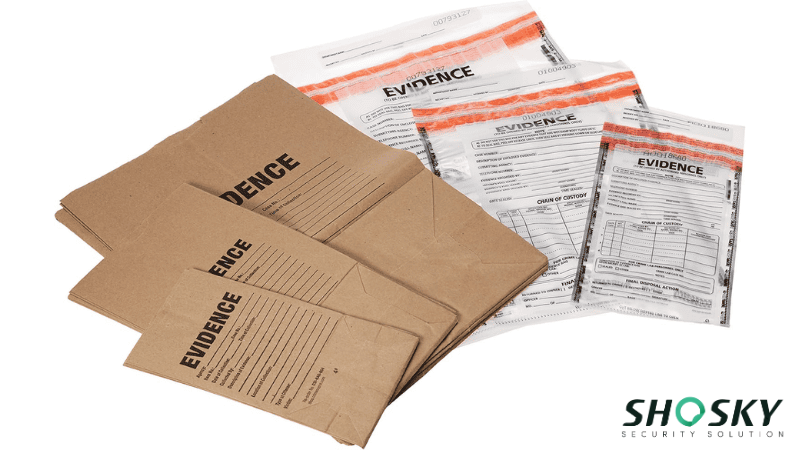
In law enforcement, proper evidence handling is critical. Officers must collect, store, and transfer physical items in a way that preserves integrity and avoids claims of evidence tampering.
Tamper-evident evidence bags are the standard here. Their tamper-evident features ensure that once a bag is sealed, any attempt to access the contents will leave a visible indication of tampering.
According to the U.S. Department of Justice, failure to maintain a clear chain of custody can result in dismissed cases or thrown-out evidence. That’s why law enforcement agencies worldwide rely on security tamper-evident bags during criminal investigations.
Whether handling DNA samples, seized narcotics, or digital devices, these bags help ensure that all evidence handling meets court-admissible standards.
FAQs
When Should You Use a Tamper-Evident Bag?
Use tamper-evident bags when handling cash, sensitive documents, medical samples, or legal evidence.
Can Regular Bags Be Made Secure?
You can add tapes or labels to regular bags, but it’s not reliable. They still lack visible tamper indicators and don’t support full traceability.
Are Tamper-Proof Bags Environmentally Friendly?
Some tamper-evident bags are made with recyclable or biodegradable materials. Always check for eco-friendly options if sustainability is a priority.
Conclusion
If you’re handling valuable or regulated items, tamper-evident bags are a must. They offer built-in features that show if anyone’s tried to access the contents—something regular bags simply don’t provide. From banking to healthcare and law enforcement, these bags are trusted for good reason. Choose smart, stay compliant, and protect your assets.
Secure Your Operations with a Tamper-Evident Bag from Shosky Security
At Shosky Security, we offer high-grade tamper-evident bags. Made with tear-resistant materials and including void indicators and customizable features, our bags show visible signs of tampering. Explore our catalog or contact us for a tailored solution!
